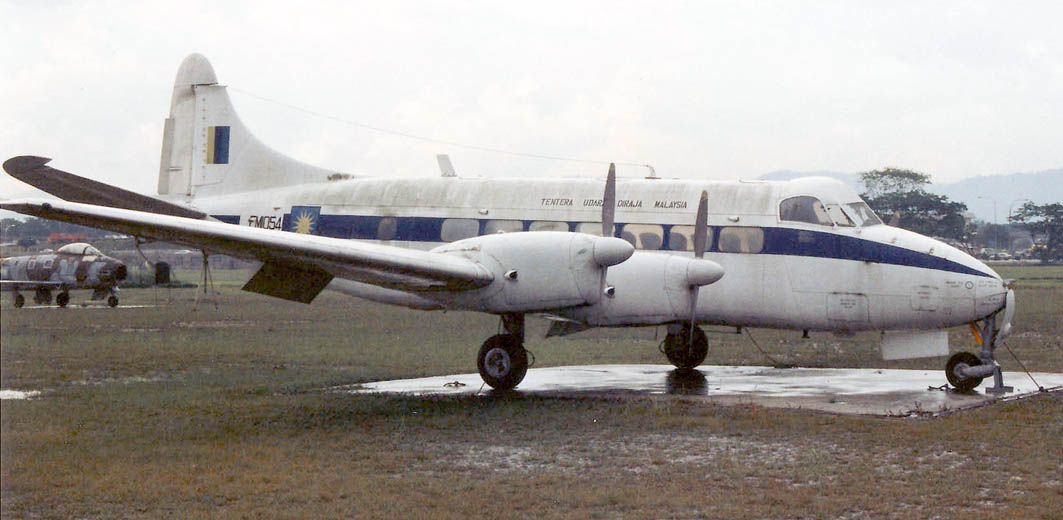
De Havilland Heron
 |
| This preserved Heron 2D wears the colours of the Royal Malaysian Air Force but its identity is uncertain. |
| While the De Havilland Dove was proposed as a
replacement for the company's Dragon Rapide, so the Heron was intended
to replace the DH86 feederliner. While the aircraft's design, based on the Dove but with a lengthened fuselage for 17 passengers, was finalised at the end of World War II the company wisely decided to wait until the world's economies had recovered before starting production. The original Heron, G-ALZL, flew on May 19, 1950 and featured four De Havilland Gipsy Queen engines and a fixed undercarriage. The first production aircraft was delivered to New Zealand Airways in April 1952 but De Havilland soon switched to the series 2, with retractable landing gear. Fifty-one series 1s were built and 97 mark 2s. The series 1B and 2B featured Gipsy Queen 30-2 engines instead of the usual Gipsy Queen 30s of the 1 and 2. A series of sub-marks introduced executive layouts (C and E) and fully feathering propellers (D) but the basic design altered little apart from a larger rudder introduced from 1955. At least 16 aircraft were modified with Lycoming piston engines by Riley Aeronautics of Florida as the Riley Heron. Executive Engineering of Coventry, UK, carried out similar work from 1969. Saunders Aircraft Corporation in Canada was formed in 1968 specifically to convert the Heron to twin PT6A turboprop configuration as the ST27. Thirteen airframes were converted before Saunders decided to build the aircraft from scratch as the ST27B, later renamed ST28. Production ended in 1963 with the 148th example and the type is airworthy in only small numbers today, noteably in Australia and the UK. |
| Contents | Photos | Census | Update |